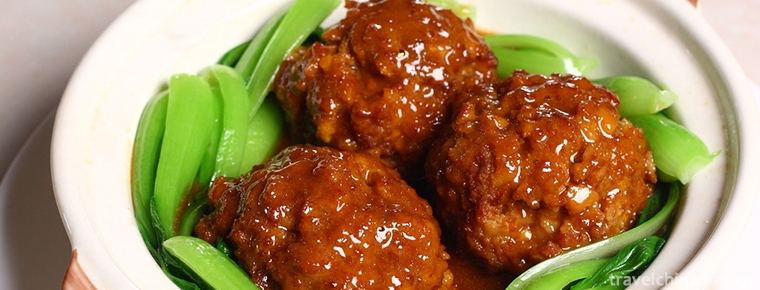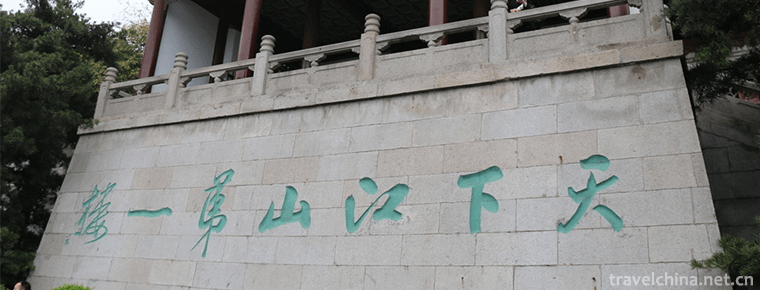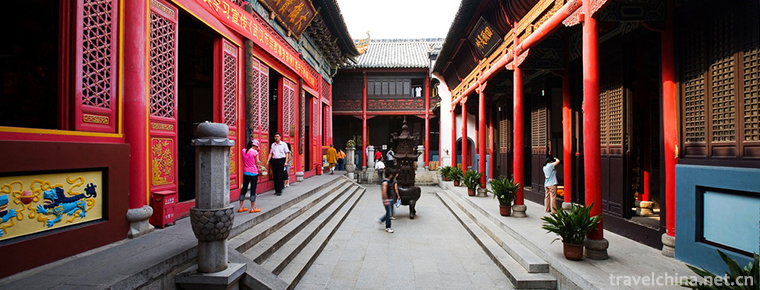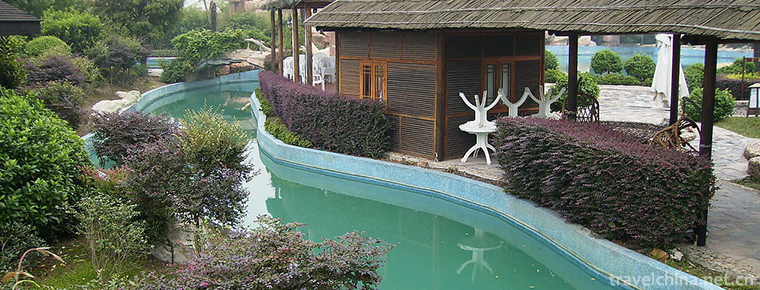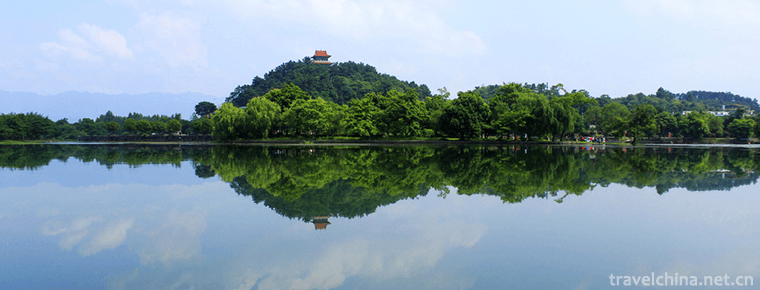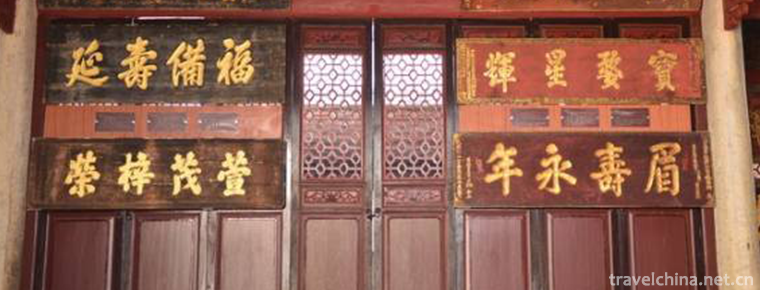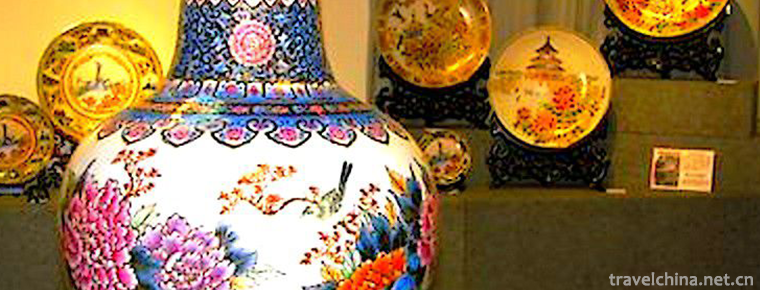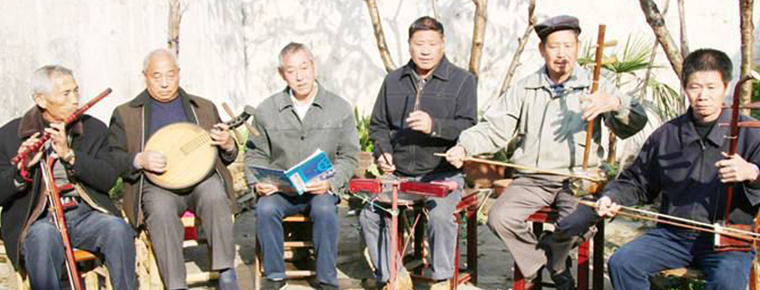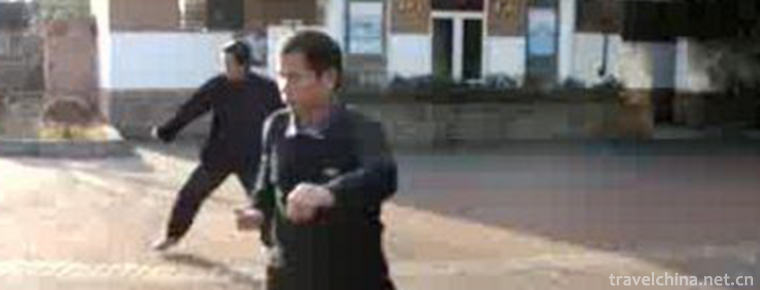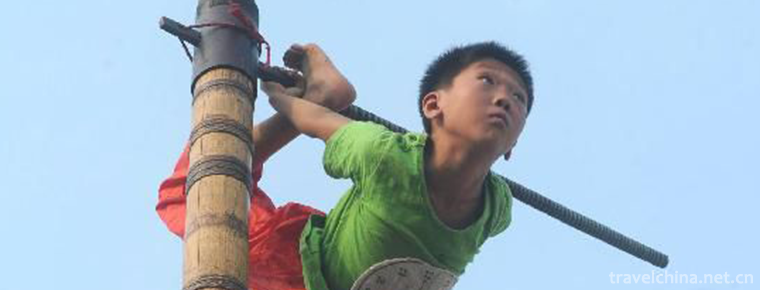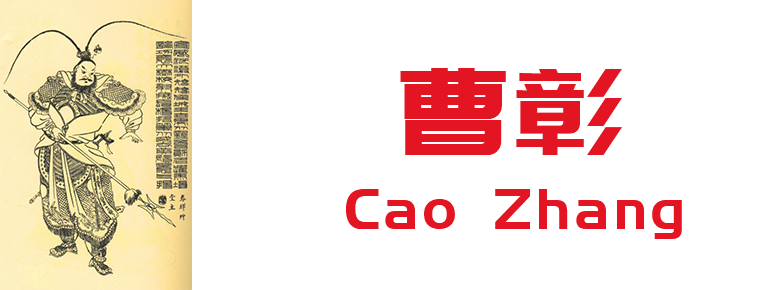Long Drum Dance of Yao Nationality
Long Drum Dance of Yao Nationality
Chinese Yao folk dance. Popular in Guangdong, Guangxi, Hunan and other provinces where Yao people live together, most of them perform on traditional Yao festivals, harvest celebrations, relocation or wedding celebrations. The long drum dance of the Yao nationality has a long history. It is often danced in the traditional ritual of the King of the Sacrifice of the Yao nationality and in some witchcraft activities of exorcising ghosts and exorcising evil spirits and curing diseases and divining divination. Now the Yao long drum dance has become a mass cultural and recreational activity.
On June 7, 2008, the Changgu of Yao nationality was listed in the second batch of national intangible cultural heritage list with the approval of the State Council.
Historical Evolution
This dance with unique national charm contains a beautiful love story. It is said that a long time ago, there lived three fathers and sons on Yaoshan Mountain. Before the old man died, his family property was divided equally among his two sons. Brother coveted money and took up all his family property. Brother Dongbi had to wander outside and work for a living. The thirteenth sister of Fangsha, the daughter of King Pangu, saw that Winter was better than human character, and went down to all places to marry him. Dongbi's brother wanted to kill Dongbi with wild methods and occupy Fangsha's thirteenth sister. Knowing this, King Pangu helped Winby defeat his brother and recalled Fangsha's thirteenth sister to heaven. Before leaving the prison, the thirteenth sister told Dongbi that there was a tree on the South hill, cut it down to make a long drum and put 360 rings on it. On October 16th, when she stepped on the ring drum and jumped 360 rings, she could fly to the sky like an eagle to reunite with her. In accordance with the instructions of his thirteenth sister, Dongbi, fearless of hardships, came to Nanshan, found the piano tree, and made a long drum. As expected, he jumped up at the appointed time and finally flew to heaven to reunite with his thirteenth sister. In order to commemorate this loving couple, people will dance long encouragement whenever Pangu Wang Po plays in the auditorium on her birthday. This custom has been spreading to today.
Every year during the Spring Festival, Paiyao compatriots not only dance long drums to celebrate the festival, but also form flower drum teams to celebrate the New Year to their brothers in the nearby Han and Zhuang regions. Everywhere we go, we are warmly welcomed. Han and Zhuang brothers took out New Year's cake and food, cooked sweet wine and dumplings, and entertained guests. After dancing, the host has to send a letter of "Li Shi" to congratulate the Yao people on their good luck in the Spring Festival.
Changgu Yao language is called "broadcasting public", which has a long history. In the second year of Shaoxing in Southern Song Dynasty (1132), the "Twelve Yao People Crossing Mountains" published on May 3 contains: "In front of the Temple of the Son of Heaven, the king's long-sleeved shirt, long waist wooden drum, striped red collar, Pipa singing. "Accordingly, the Yao long drum has a history of more than 800 years.
On November 28, 2018, the Yao Long Drum Encouragement Project of Zhongnan University was selected as the first batch of excellent traditional Chinese cultural heritage bases in Colleges and universities across the country .
Stylistic features
Basic movements
During the performance, the drummer holds the drum waist of the long drum in his left hand and flips up and down, and then slaps his right hand while dancing. The main motions are simulated animals and sacrifices.
The dance is vigorous and simple in style. Some can also dance long drums on an eight immortal table while playing and dancing. Usually accompanied by Suona, gongs and drums, sometimes singing "Panwang Song" to help the fun.
Long drum dance can be divided into "single dance", "double dance" and "group dance". It has 72 sets of performance procedures, and each set is divided into several animal details such as "starting" and "moving". Its movement characteristics are rugged, brave, bold, strong, strong, tough, free and easy. Whether it is jumping, jumping, squatting, frustration or rotation, flipping, jumping, tossing and other dynamics, all show the Yao people's warm, bold and courageous personality characteristics.
The drumming movements of long drums mostly express production and life contents, such as building houses, ploughing fields, imitating animal movements, etc. They are vivid and full of life flavor. Drum beating can be divided into literary fighting and military fighting. Literary beating is gentle and slow, rough and bold; 2 people fight, 4 people fight, but also a large group of people in a circle, warm atmosphere, loud drums.
Prop
classification
Long drums are divided into small, medium and large drums according to their shape. Small long drum is also called short drum, about 70-90 cm in length, 4-5 cm in diameter and 8-10 cm in diameter at both ends; medium long drum is also called long waist drum or yellow clay drum, about 110-130 cm in length, about 15-20 cm in diameter at both ends, about 25-30 cm in diameter; big long drum is also called race drum, about 180-200 cm in length and drum waist. The diameter is about 20 - 25 centimeters, and the diameter of the drum surface at both ends is about 30 - 40 centimeters.
Make
Long drums are usually made of sardonia wood and covered with cow and sheep skin. It is about 1.2 meters long, small in the middle and big at both ends, one of which is slightly larger than one third. The wood core is hollowed out, two horns are covered with refined yellow sheep skin, and then two yellow sheep skins are tightened with 6 to 8 dyed hemp ropes, then painted with red, yellow and white colors, and painted with dragon and phoenix patterns to beautify the drum body. When dancing, dancers tie two "drum necks" with a ribbon, hang them on their shoulders and across their waists. The right hand makes the palm and left hand hold bamboo pieces to beat drums separately. With the music rhythm, they make a "twitter" sound. If more than four people beat drums, with the beat of music, that is to say, "crackling flat" sound of vigor and excitement. If accompanied by horns, gongs and suonas, such as ancient battles and battles, the sound of drums, mountains and valleys should be exciting.
Regional differences
The Paiyao people living in the mountainous areas of northern Guangdong like to dance long drums during the holidays. The long drum dance of the Yao nationality in Liannan, Guangdong, was introduced when the ancestors of Paiyao migrated to Liannan during the Sui and Tang dynasties, and flourished with the prosperity of the opera hall. When dancing, dancers wear Festival dress, red silk waist, white leggings, hanging flower drums more than 1 meter long, sometimes flying around, sometimes like tigers rushing to the ground, especially when performing in pairs, like two tigers fighting, and like two dragon beads, it is really interesting. The whole set of movements is vigorous and forceful, rough and free, which shows the Yao people's diligent and brave spirit and strong character vividly. Among them, "cock fighting", "archery", "tiger jumping dragon gate" and other movements, dance graceful and peculiar, but also very difficult, requires skilled performance skills.
Changgu Yao language is called "Wang Du", about 4 feet long, two big, small in the middle, a trumpet-shaped. The drum body is made of sardonia wood. Cover both ends with cowhide or sheepskin for drum noodles. When dancing, they hang horizontally around their waists, with their right fingers close together, clapping with their hands. Make "Bi" sound; hold a piece of bamboo in your left hand, beat the drum face and make "winter" sound. In this way, beat continuously and rhythmically, the sound of "winter to winter to winter to winter ratio" will be emitted. Performers change their rhythms and express different contents and emotions to achieve their artistic effects. In the form of performance, Long Drum Dance is divided into single dance, double dance and multi-person dance (four, six, eight), a total of 36 sets of performance procedures, the content is very rich. The drum body of the Yao long drum is made of wood, hollowed at both ends and covered with sheepskin. There are two kinds of drums: the big drum is over 1 meter long, the drum surface is 0.2 meters in diameter, the middle drum waist is 7-8 cm thin, the small drum is about 0.8 meters long and the drum surface is about 0.1 meters in diameter. The drum is often beaten with yellow mud paste on the drum surface to adjust the timbre, so this dance is also called yellow mud drum.
The long drum dance in Paiyao area of Guangdong Province is a male dance. The dancer hangs the long drum obliquely around his waist, beats the drum with bamboo slices in his left hand and slaps the drum with his right hand. The forms of performance are double dancing and circle dancing. When dancing, one person leads the dance, the other person corresponds to each other, while the circle dance is also led by one person and joined by all. The basic rhythm of dancing is to shake the drum head while beating the drum, which drives the upper body to move continuously and the gentle undulating step of half bending knees. There are male and female drums in the Dayaoshan area of Guangxi. The male drum is the same as the one mentioned above, with the left hand holding the drum and the right hand clapping; the female drum is short and round, and is hung at the waist by a dancer. Most of the dancers are elder drummers in villages. Usually it consists of one female drum and four male drums. The female drum controls the rhythm of the dance. Drummers are men, while women dance with handkerchiefs while singing.
The small long drum evolved from the big long drum and was mainly popular in the Dayaoshan area of Guangxi and the Yao nationality area of Hunan. Usually two or four people hold long drums and dance together. On grand festivals, there are a large number of participants. The small long drum is light and flexible, and has many dancing movements. It can be divided into three postures: high pile, middle pile and low pile because of the different knee flexion and extension degree and the position when playing drum. There are "Wen Da" and "Wu Da", "Wen Da" movements are gentle and stretching, and "Wu Da" movements are rough and complex. There are also "platforms" on one or two bases of tables, which make dancing more difficult. There are 36 sets of Yao long drums, which can be divided into house-building, agricultural production, making long drums, etiquette and games. Each set of movements changes from slow to fast, gradually forming an orgasm. This kind of dance is mainly accompanied by its own drums, and is often accompanied by sonar, gongs and cymbals. When the masses are large, they often sing yellow clay drum songs together.
Current situation of inheritance
Yao long drum dance belongs to festive dance. On traditional festivals such as "New Year's Day" and "Song Hall Playing" on October 16th of the lunar calendar, or on festive occasions such as harvest celebration and wedding celebration, the Yao family improvised their young singers and danced with great momentum.
Yao people play long drums mostly on March 3rd, June 6th, August 15th and October 16th of the lunar calendar. Especially on October 16, Panwang Festival of Yao nationality was the most popular. "Return the king's wish" for three years, one for twelve years, three days and three nights for a long drum and seven days and seven nights for a big wish. Before the founding of the People's Republic of China, such activities were carried out by clan organizations with the same surname. After the founding of the People's Republic of China, the village is organized as a unit, and not limited to the above-mentioned festivals. Long drums can be played on National Day, Spring Festival or when celebrating the harvest.
On the National Day of 1951 and 1954, Pan Tianfeng, Pan Yongming, Zhou Decheng and Zhao Gengmei, long Drummers of the Yao nationality in Jianghua, performed in Beijing successively and were received by the leaders of the Party and the state in the Great Hall of the People. In September 1982, Feng Maolin and Huang Wengui, long Drummers of the Yao nationality in Jianghua, performed at the 2nd National Minority Traditional Sports Meeting.
Inheritance Significance
Changgu inspiration mostly reflects the Yao family's production struggle and living customs, reflects the Yao people's ideological feelings and ideal aspirations, and has the unique style of the Yao people. In the form and procedure of performance, they fully express the character and temperament of Yao nationality. The dance moves are rough, brave, bold, vigorous, free and easy; the rhythm is bright and agile. Dance vocabulary imitates climbing mountains and falling mountains, crossing rivers and valleys, cutting trees and transporting trees, fighting dragons and fuhu, etc. It is vivid and easy to understand. Yao dance is almost all mass and square, and has certain props, such as long drums, flower drums, horns, umbrellas and so on, which constitute the national style, popular with the masses and easy to spread. Therefore, in festivals, weddings, religions, funerals and other occasions, there are songs and dances, very lively.
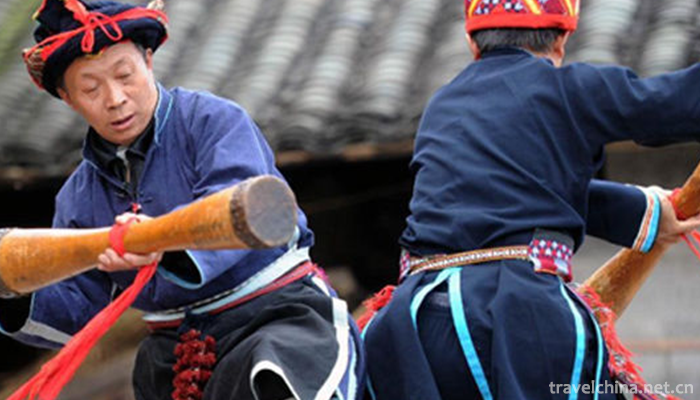
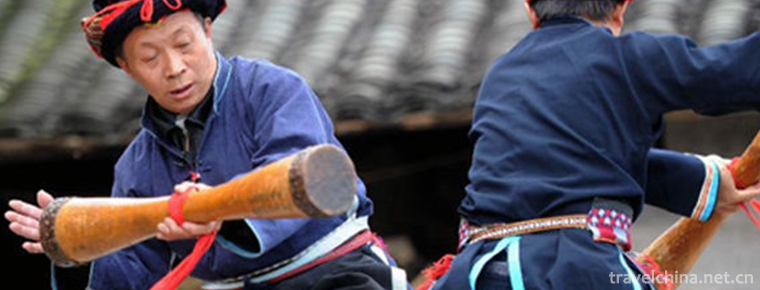
Long Drum Dance of Yao Nationality
-
Stewed Pork Ball in Brown Sauce
Lion head is a traditional dish in the Huaiyang cuisine of Yangzhou, Jiangsu, China. Legend has it that Lion's Head began in the Sui Dynasty
Views: 394 Time 2018-10-27 -
Huanghelou Park Wuhan
Wuhan Yellow Crane Tower Park: The Yellow Crane Tower on Snake Mountain in Wuchang is one of the three famous buildings in the south of the Yangtze River.
Views: 189 Time 2018-12-12 -
Great Wall of Ming Dynasty in Datong County
According to documents, the Great Wall of Qinghai Province in the Ming Dynasty was built in the middle of the Ming Dynasty. It lasted 51 years from 1546 to 1596.
Views: 176 Time 2019-01-07 -
Gui Yuan Temple
Guiyuan Chan Temple is located in Guiyuan Temple Road, Hanyang District, Wuhan City, Hubei Province. It was built by Master Baiguang in the fifteenth year of Shunzhi Qing Dynasty (1658 A.D.). Covering
Views: 158 Time 2019-01-13 -
Golden Peacock Hot Spring Resort
Anhui Jinpeacock Hot Spring Resort is a commercial resort hotel which integrates vacation, fitness, leisure, entertainment, catering and accommodation. It covers an area
Views: 149 Time 2019-01-26 -
Linqu canal
Lingqu, formerly known as the Qin Digging Canal, Zero Canal, Douhe Canal, Xing'an Canal and Xianggui Canal, is a great project created by the working people of ancient China
Views: 343 Time 2019-01-30 -
Plaque Custom Hakka Plaque Custom in South Jiangxi
Hakka plaque custom in southern Jiangxi has gradually developed with the migration of northern scholars to southern Jiangxi. Hakka traditional custom in rural areas has been formed
Views: 175 Time 2019-04-04 -
Firing Techniques of Chaozhou Coloured Porcelain
In Chaozhou at the end of the Qing Dynasty, new colored pigments were used in the colored porcelain painting. Combining traditional glaze painting art with traditional Chinese painting
Views: 255 Time 2019-04-16 -
Lanxi stall spring
Lanxi Spring Spring Spring Spring is an ancient form of sitting and singing art, which was formed and popular in Lanxi area in the Midwest of Zhejiang Province, Jinhua and Quzhou, and belongs to Nanci
Views: 161 Time 2019-05-10 -
Block door La shou men
Stopper Gate is one of the traditional Chinese boxing schools. It originated in Shaolin and was introduced to Tianjin in the early Qing Dynasty. It originated in Sichuan. It was the earliest southern
Views: 234 Time 2019-05-10 -
Zuo Gezhuang Club
Chongxin Village is located in Zuogezhuang, northeast of Wen'an County. Its economic prosperity and people's prosperity have become the material and cultural basis for the preservation and continuatio
Views: 393 Time 2019-08-16 -
Cao Zhang
Cao Zhang (189 years - 223 August 1st), Zi Zi Wen. Pei Guo Qiao County ( Anhui People in Bozhou. Three countries period the Wei state of the Three-Kingdoms Period Imperial clan, general, Wei Wu Di Cao
Views: 184 Time 2019-09-15
